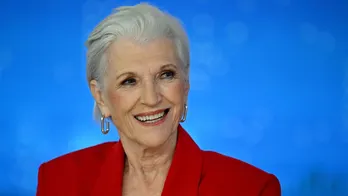What could we do with a third thumb?
In comic books and superhero films, we often see characters use extra mechanical limbs to transform their everyday lives. They may have metal wings to take to the sky or use their expendable arms to scale buildings rapidly. But prosthetic augmentation of new body parts isn't fiction. This emerging industry is making people rethink how these augmentations may reshape our bodies and minds.
The two guests on our show today — neuroscientist Tamar Makin and prosthetic designer Dani Clode — are fascinated with how the brain and body might adapt to an additional thumb, specifically the Third Thumb. They spoke to NPR's Short Wave podcast in Washington D.C. at the 2023 annual meeting for the American Association for the Advancement of Science (AAAS).
"We thought the maybe most important first question for us is to understand how extensive use of an extra body part going to change the way the brain represents and controls your own biological one," Tamar said.
It turns out the human brain generally adapts to the use of the Third Thumb remarkably well.
Tamar is a Professor of Cognitive Neuroscience at Cambridge University's MRC Cognition and Brain Sciences Unit and the leader of the Plasticity Lab. Her research explores how our body representation changes in our brains – what's called brain plasticity. To study this, she focuses on hand function and dysfunction, and how we could use technology to increase hand functionality in both disabled and non-disabled individuals.
Meanwhile, Dani designs upper-limb augmentation and prosthetics. She collaborates with Tamar as the Senior Technical Specialist at the Plasticity Lab, as well as with groups like the Alternative Limb Project. Dani's work investigates the future architecture of our bodies, challenging the boundaries of extending the human form, whether that's adding a third thumb, a tentacle called the Vine or a prosthetic forearm that glows with the wearer's pulse.
Keep checking your feed for more Short Wave episodes taped live at the AAAS Sci-Mic stage.
ICYMI, here are episodes which have already aired:
- Short Wave LIVE: Perennial rice: Plant once, harvest again and again
- Short Wave LIVE: The importance of sustainable space exploration inthe 21st century
- Short Wave LIVE: Renewable energy is here. But how do we store it for the future
Listen to Short Wave on Spotify, Apple Podcasts and Google Podcasts.
We love hearing from you! Reach the show by emailing shortwave@npr.org.
This episode was produced by Liz Metzger and Thomas Lu. It was edited by our managing producer Rebecca Ramirez, Gabriel Spitzer and Audrey Nguyen. It was fact checked by Susie Cummings. Special thanks to Carleigh Strange and Valentina Rodríguez Sánchez for their audio engineering, and to Lisa McAvoy, Maia Johnston and the AAAS staff for their support.
Disclaimer: The copyright of this article belongs to the original author. Reposting this article is solely for the purpose of information dissemination and does not constitute any investment advice. If there is any infringement, please contact us immediately. We will make corrections or deletions as necessary. Thank you.







